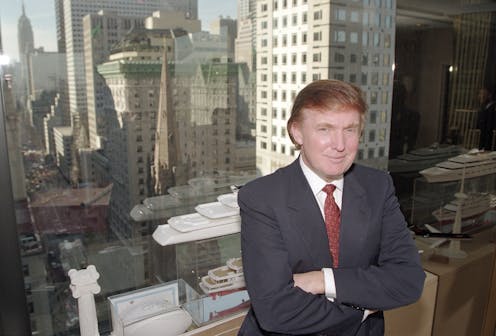
Donald Trump has been colonising the world’s attention for years, via television, on social media and in books. Ironically, given Trump likes books about as much as he does germs, more than 100 books about him are listed on Wikipedia, ranging from biographies and exposés to paeans of praise (think his former campaign manager, Corey Lewandowski) and scathing analyses of his presidency.
One work, Plaintiff in Chief, concerns the gob-smacking number of lawsuits Trump and his businesses have engaged in – 3500 – and is already well out of date, having been published in 2019. There is even a book about all the Trump books. Its nicely punning title, What were we thinking?, might also be said to apply to the publishers of Carlos Lozada’s book although that would undervalue his insights, and those of the authors whose work he examines.
Review: Confidence Man: The making of Donald Trump and the breaking of America –Maggie Haberman (HarperCollins)
With the application of all this intellectual muscle, though, what do we still need – or want – to know about Donald Trump? All of us probably do need to know the likelihood Trump will run again for president and, worse, win. On that hinges the future of democracy in a global superpower along with prospects for real action combating the effects of climate change.
Read more: US elections: November ballot will test whether Trump is ready to bounce back
The answer to this need-to-know question is undeniably important, but I still want to know whether Trump actually believes the 2020 presidential election was stolen. Is there some psychological wound from his childhood that renders him unable to bear loss? Or is his unblinking refusal to accept the election result yet another example of his lifelong habit of lying and grifting to get his own way?
If the answer is the former, I care less about what might have happened to Donald as a toddler than that he has managed to persuade about two thirds of Republican voters to his view, according to polls analysed by Politifact.
If the answer is the latter, which bespeaks a truly chilling level of cynical disregard for the consequences of his actions, it immediately raises another question. Exactly how has Trump been able to persuade so many Republicans to believe his lies, despite all evidence to the contrary, including Trump’s legal team losing 64 out of 65 cases brought contesting the result?
I ask these questions following publication of Maggie Haberman’s Confidence Man: the making of Donald Trump and the breaking of America. Since the mid-1990s, Haberman has reported on Trump, first for the Murdoch-owned tabloid, The New York Post, then for its rival, The New York Daily News, and, since 2015, for The New York Times.
The driving argument of her book is that to understand Trump you need to understand the New York real-estate and property development world in the 1960s, 70s and 80s. What he learnt there, she argues, about business, politics and people, was the template of behaviour he took into the White House.

‘False’, ‘Totally false’, ‘Fake News’
During two campaigns and four years in office, writes Haberman, Trump treated the country like a version of New York City’s five boroughs. His aides soon realised he had imagined a presidency that functioned like one of the once-powerful Democratic Party machines in those boroughs. A single boss controlled everything in this kingdom and knew his support alone could ensure electoral success for others. This was an “us” versus “them” realm where racial dynamics changed from one block to the next.
The argument has explanatory power. But so too, to take one example, does James Poniewozik’s view, in his 2019 book, Audience of One, that the key to Trump’s worldview is his symbiotic relationship with television. Trump did seem to govern in much the same way as he behaved in The Apprentice, the reality TV program he starred in – making contestants beholden to his every whim and impulse.
As Poniewozik puts it, the Trump administration soon became a “dogpile of competitors, cronies and relatives throttling one another daily for survival”.
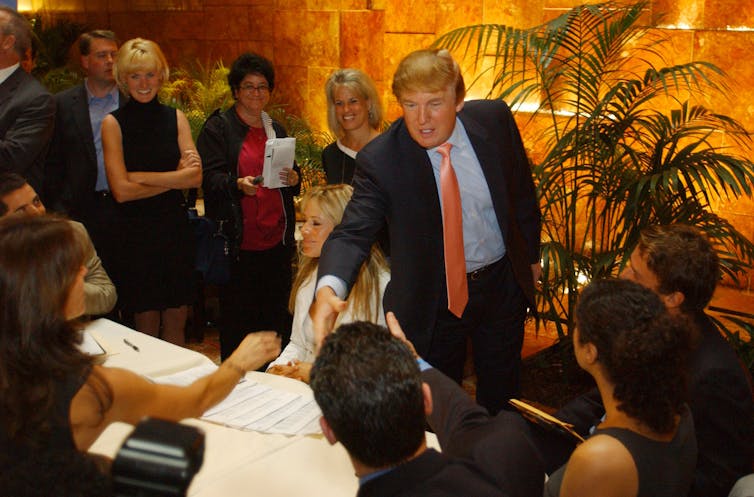
Haberman tells readers that on top of her daily reporting, she conducted 250 interviews for the book, including three with Trump, either in person or in writing. For the latter, Trump annotated her list of questions in his customary black “Sharpie” pen with comments like “False”, “Totally false” and “Fake News”.
Because Haberman has known Trump for so long she has been derided as a schill. Because she enjoyed good access to him on the campaign trail and during his presidency she has been called a “Trump whisperer”. She may at times have been both, but like almost any journalist who has reported on Trump her work has been labelled “fake news”.
She has borne, too, Trump’s seemingly casual but calibrated barbs: “Did you ever notice that her glasses are always smudged?” he said to his aides.
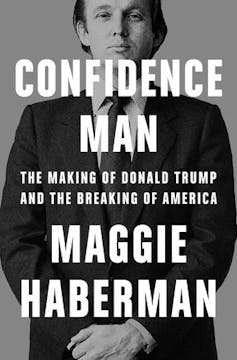
More precisely, she reports him saying this to aides, but there is no source for the comment in the book’s end-notes. Does that mean he didn’t say it? Does Haberman take the same insouciant approach here to sourcing as the authors of Plagued, political journalists Simon Benson and Geoff Chambers, did in their recent book about the Morrison government’s response to the pandemic?
Like the authors of Plagued too, Haberman has fielded criticism for withholding information from her newspaper readers and saving it for her book. (Benson and Chambers knew about Morrison’s multiple ministerial portfolios but held onto that information for up to two years before it became public.)
In Confidence Man Haberman recounts Trump telling one aide days after the 2020 presidential election, “I’m just not going to leave”, and another, “We’re never leaving. How can you leave when you won an election?” (She also reports him in other conversations seeming to accept he had lost but does not probe the contradiction further.) Should she have reported those comments at the time rather than saving them for her book?
The information gathered by Haberman was clearly important and could, perhaps should, have been published in The New York Times contemporaneously but we don’t know the circumstances in which it was obtained. Perhaps the information was only revealed on condition it would not be published immediately. There is little doubt that people being interviewed for a book published well after the news cycle has pedalled on are willing to speak more candidly. If the aim of a book is to provide context and nuance about contested current events, then the trade-off between news now and understanding later may be worth it.
Responding to the criticism that she had witheld vital information from the public, a spokesman for The New York Times said,
Maggie Haberman took leave from The Times to write her book. In the course of reporting the book, she shared considerable newsworthy information with The Times. Editors decided what news was best suited for our news report.
Devastating observations
Returning to the “smudged glasses” barb, we know Trump has publicly insulted women and journalists countless times. The comment has the ring of truth, so it is probably not as important that this quote was unattributed. The end-notes of Confidence Man do run to 63 pages (providing a good deal more information than the sparse end-notes in Plagued.)
At several points Haberman also tells us about news stories she has written, how they were received, those whose accuracy was later vindicated and, occasionally, those that contained errors of fact or context. In other words, she is reflective and concerned to be as fair as possible in her reporting and judgements.
When Haberman’s book was released in early October, New York magazine listed 22 revelations from it while acknowledging they “feel less like bombshells and more like laundry lists of erratic presidential behaviour”.
For many readers the coverage of New York City’s property world will be unfamiliar, but the bulk of the book covers Trump’s political career and is very familiar: the 2016 campaign, the presidency, the unceasing stream of controversies – large, small or confected – the impeachment trials, the pandemic response, the 2020 campaign and the January 6 riots at the Capitol.
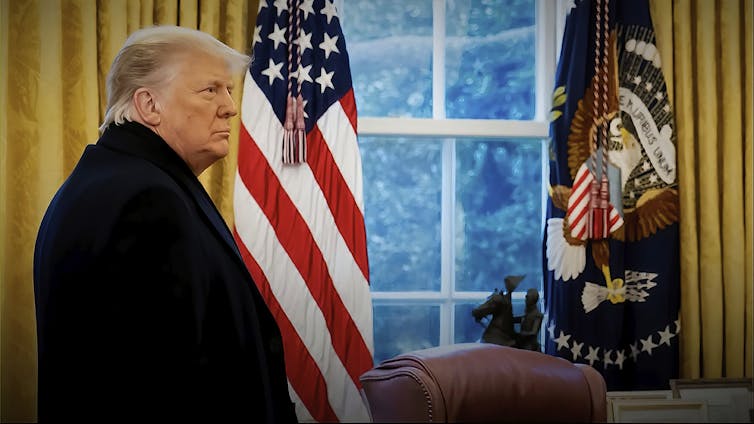
Familiar though these events are, their sheer volume means they are not discussed in any great depth and what discussion there is does not venture beyond the political journalist’s inside-the-Beltway frame of reference. This can be frustrating but the value of reading Confidence Man, in my view, is not in the explosive revelations or the private, never-seen-before details. It is how Haberman uses anecdotes to build up a devastating picture of character.
It is true there is some extraordinary material in the book but Haberman does not badge it up Bob Woodward-style. Instead, she quietly but frequently enough for it to look like a deliberate strategy, drops in eye-popping anecdotes and devastating observations about Trump’s behaviour.
You have to be on the lookout for them because they are nestled within 597 pages of detailed coverage of his life and career. Some come from her own reporting while others are drawn from earlier journalists’ and authors’ work.
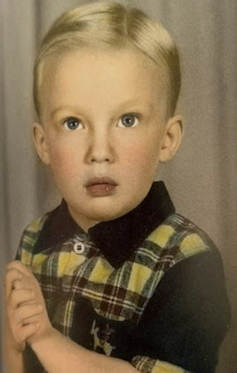
Haberman spends little space on Trump’s childhood but enough to show his bullying began early: a neighbour in Queens, New York, was horrified when her baby sitting in a playpen in the backyard was pelted with rocks over the fence from a five-year-old Trump. Later, Trump proudly recalled gluing together his brother Robert’s blocks to build his own tower.
That Trump is profligate with others’ money but tight with his own is well known but Haberman reminds us that one of his early antagonists, the satirical magazine, Spy, used to mail cheques to his office for steadily diminishing amounts to see whether he would keep cashing them; he did, down to one for 13 cents.
When the Trumps moved into the White House in 2017, Donald loved being able to press a button on his desk to order a valet to bring him a Diet Coke. He remade the White House to suit his tastes, installing plenty of television sets, even in the bathroom, and telling guests he had renovated the entire area, including the toilet.
“You understand what I mean,” he said to one visitor, who interpreted it to mean he did not want to use the same bathroom as his African-American predecessor. Apart from the apparent racism, Trump’s statement was also untrue as officials told Haberman it was customary for toilet seats in the White House to be replaced between one administration and the next.
Trump may not be a book reader but, Haberman reports, he has near perfect recall of anything written about him in the media. He knew little and cared less about policies or how government actually operated but staff noticed he absorbed policies far better from television coverage than from their briefings.
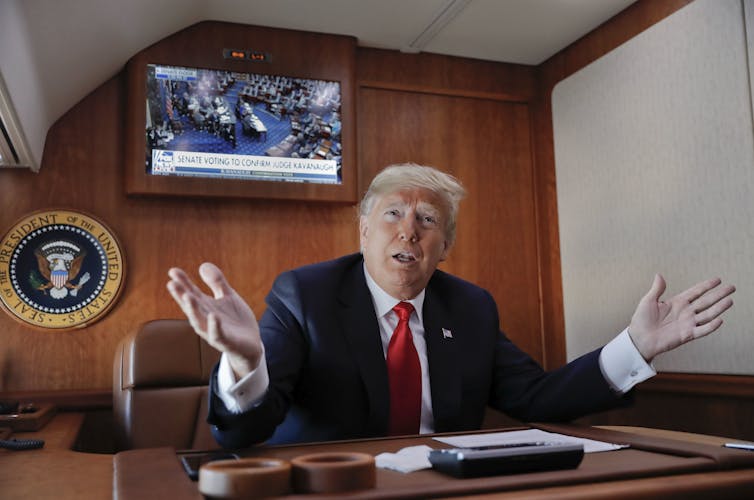
They noticed his “singular interest” in whether those representing him on television appeared persuasive, and on their appearance full stop. He would comment on the lighting, the make-up, the women’s dresses, their hair. Trump had always been preternaturally aware of the appearance of things. Sleeping over at a friend’s house during primary school, he earnestly commented on the “wonderful” quality of the bed-sheets.
Extra ice cream and special glassware
Trump himself noticed how he could say almost anything and supporters at his MAGA rallies would forgive him. Haberman compares this revelation – and two others – to the scene in Jurassic Park when the velociraptors learn how to open doors.
Similar penny-dropping moments happened when Trump learned how to communicate by Twitter unburdened of staff controls and when he discovered presidential pardons. “For Trump, who never really accepted the fact that Congress was a separate and equal branch of government, the ability to deliver ‘justice’ on a case-by-case basis hit like a revelation,” writes Haberman.
The Faustian pact Trump appeared to strike with his MAGA base, though, was that just as they would forgive him if he shot someone on Fifth Avenue, as he infamously remarked, so he would shape his administration to suit their every demand, no matter how misconceived, extreme or counter-productive they might be.
Trump’s callousness and cruelty is well documented. (Haberman reports that one of the very few times Trump has cried was in private after his father, Fred, died.) When he began building the notorious wall on the southern border of the US to keep out Latino immigrants and asylum seekers, he urged officials to put spikes on top and to paint it black so as to burn the skin of those trying to climb the wall.
John Kelly, one of the revolving door of chiefs of staff who tried and failed to bring order to the Trump administration, had a son in the military who died while on duty in Afghanistan, and Kelly had been a general himself. Once, when he and Trump were standing together at the Arlington National Cemetery grave site where Kelly’s son was buried, Trump wondered aloud why anyone would want to join the military.
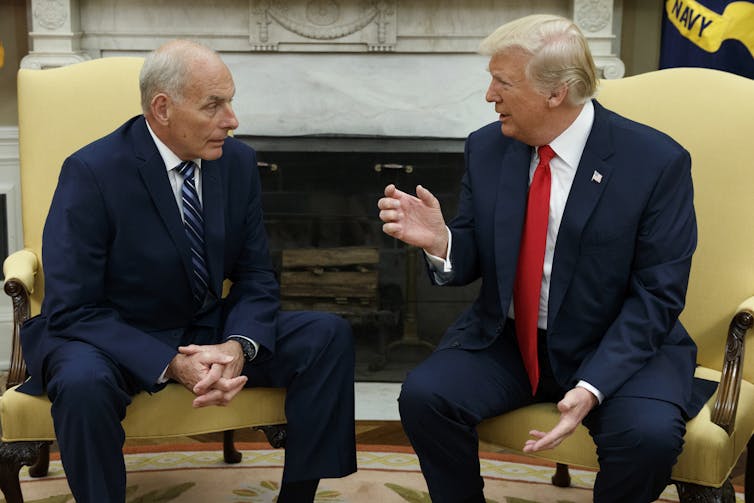
Trump’s petty, venal behaviour has also been well documented, but the details Haberman has marshalled can still surprise. After winning the 2016 election, he invited a group of moderate Democrats to join him for dinner to discuss various pieces of legislation, but he couldn’t help needling them throughout. For dessert, he made sure he received one more scoop of ice cream than any of his guests.
More importantly, as early as 23 February 2020 Trump was not only aware of the dangers of COVID-19 but was taking precautions against it. On a trip to India Trump was reluctant to eat, pushing food around his plate and drinking only from “special glassware that he said Melania [Trump] had the White House staff pack for the trip, primarily for fear of contracting the coronavirus”.
During the pandemic he sometimes acknowledged the seriousness of COVID but mostly he downplayed or denied its impact on public health, with catastrophic results.
A deeper malaise?
Carlos Lozada, in his survey of all those Trump books, identifies many that seek to explain the Trump phenomenon through a single overriding cause, and he finds that limiting. Haberman tacitly acknowledges this when she quotes Trump saying he always aimed to “put some show business into the real estate business”. When he did, she writes, Trump learnt that “he could win as much press for projects he never completed as those he did”.
Poniewozik, from his vantage point as a television critic, makes the same observation: namely, that Trump enjoyed more success playing the role of a business titan on television than actually being one, before citing Fran Leibowitz’s acid line that Trump is “a poor person’s idea of a rich person”.
Closing Haberman’s book, I do think Trump knew he had lost the election quite soon after the results came in. Just how much his years in New York’s property development world shaped that decision is hard to say. It seems part of the explanation but only part.
In my mind her book jostles alongside Poniewozik’s work and for that matter, James Zirin’s Plaintiff in Chief, which underscores how Trump sees the law not as a “system of rules to be obeyed” but “as a potent weapon to be used against his adversaries”. We’re still seeing this play out in Trump’s unremitting efforts to stave off multiple investigations of his business and his behaviour.
Lozada prefers explanations of Trump as a symptom of longer term problems in American politics and society, an approach exemplified in BBC correspondent and historian Nick Bryant’s excellent book, When America Stopped Being Great. Surely both explanatory approaches need to be deployed.
Trump may be a symptom of a deeper malaise afflicting American democracy but has there ever been a symptom quite like him? In 2020 the majority of voters opted to be cured of their Trump symptoms, but the treatment failed and the bacillus rages on.
Matthew Ricketson does not work for, consult, own shares in or receive funding from any company or organisation that would benefit from this article, and has disclosed no relevant affiliations beyond their academic appointment.
This article was originally published on The Conversation. Read the original article.







